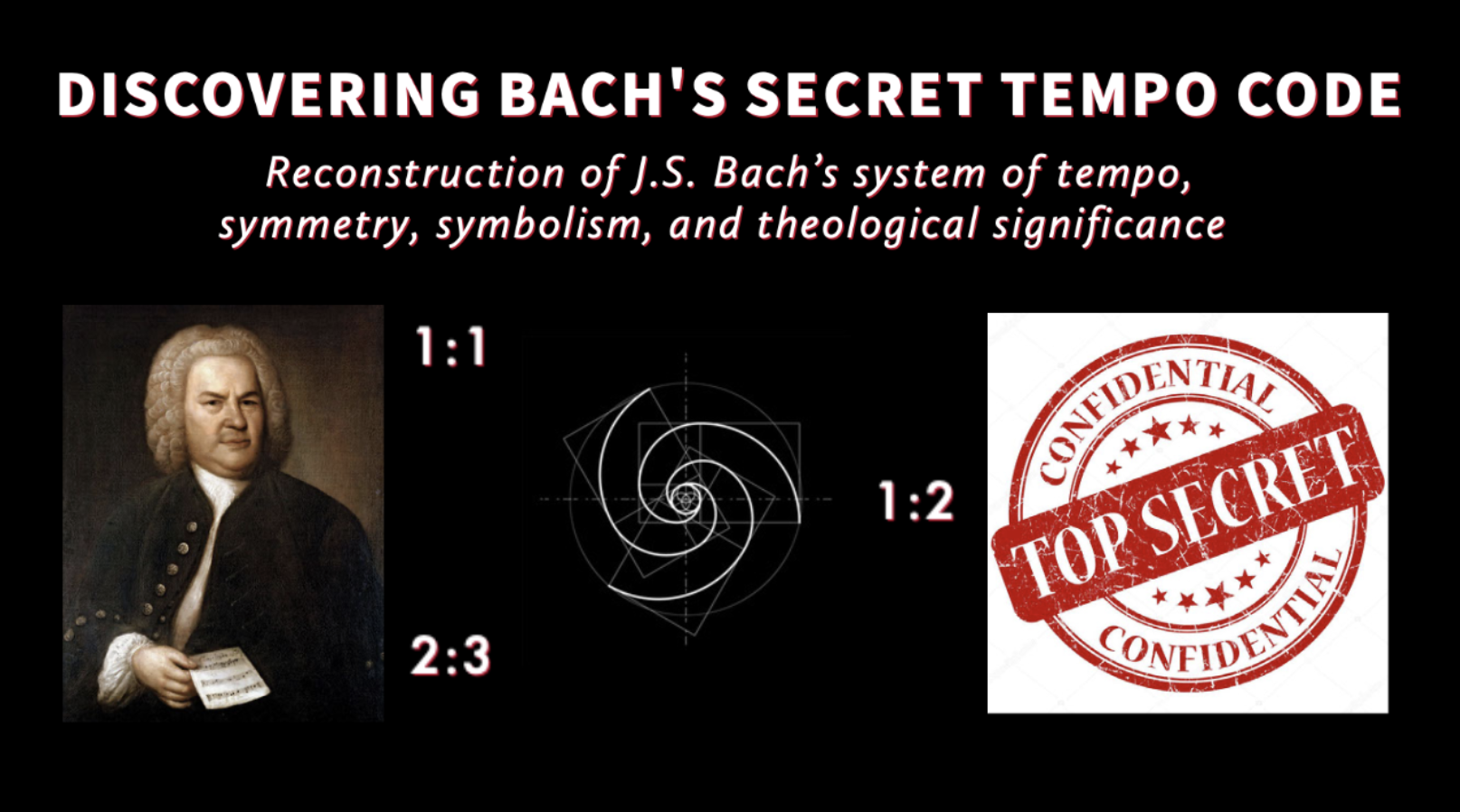Discovering Bach’s Secret Tempo Code
ABOUT: “Discovering Bach’s Secret Tempo Code” is an ongoing free e-book which is periodically expanded, updated, and revised, representing a total of over 30 years’ research. I first discovered what I refer to as Bach’s “secret system of tempo” in 1992 as a graduate student in piano and musicology at the University of Kansas. The project was well underway from 1992-2002, which was put on hiatus in 2002 for the next 20 years. In 2022, I resumed working on the project aiming to make it into a book. However, instead of constantly struggling to get a “final product” to “cast into stone” for this highly technical project (i.e., a traditional print book), I thought it would be easier and more practical to simply present this book-in-progress as a blog on this website. I call this a “Book-in-a-Blog”! This way, I may add and edit content periodically as time permits for your reading pleasure. Please enjoy this free Book-in-a-Blog!
PLEASE NOTE: If you are reading this and you happen to have connections to a major publisher that could make this sort of thing into a bestseller (think along the lines of that intellectual bestseller years ago, Gödel, Escher, Bach) please email me. I honestly believe my discovery or “uncovering” of Bach’s tempo system is one of the most important and far-reaching musicological discoveries of the 20th and 21st centuries. If marketed and presented correctly, I see a bestseller. I see dollar signs for you (the publisher) and me! Please help!
Sincerely, Cory Hall (D.M.A.)
Chapter 1: Groundbreaking Discoveries
In June 1992 I had just finished my first year at the University of Kansas working towards a D.M.A. in piano performance and M.M. in historical musicology. One of the courses I really enjoyed that year was a “Performance Practice Seminar” taught by Professor J. Bunker Clark.
Chapter 2: Bach’s Tradition vs. Modern Tradition
In the eighteenth century, the normal or natural tempo that represents the music most clearly was known as tempo giusto, also sometimes referred to as tempo ordinario. Eighteenth-century performers were generally steeped in tradition and would have rarely chosen a tempo outside the accepted range for any given style.
Chapter 3: Bach’s Musical Science and the Imitation of Nature
In his biography Johann Sebastian Bach: The Learned Musician, Christoph Wolff begins with a ten-page essay, a Proloque titled “Bach and the Notion of Musical Science,” which sets forth the thesis that Bach preferred to refer to himself as “one who produces works of musical science” rather than a “mere practitioner of music”. Wolff writes:
Chapter 4: The Alpha and the Omega and the Imitation of Nature
The letters Alpha and Omega, Α and Ω, are the first and last letters of the Classical Greek alphabet, which symbolize the unity and oneness of “God, the Father” and “God, the Son” in Christian theology.
Chapter 5: Reconstruction of Bach’s System of Tempo
Theorizing about proportional tempos in Bach’s music is nothing new and this book is certainly not the first publication to propose such a thing; however, this author is perhaps the first person to categorize these proportional tempos into a logical and coherent system of rows and columns consisting exclusively of integers
Chapter 6: Bach, Musical Architect & the Divine Numbers 1-2-3
In Chapter 5, the forty examples of extremely accurate duration ratios (with an average discrepancy of 1.2%) from a wide variety of works and genres indicates that Bach operated with a unique system that allowed him to achieve these ratios.





















